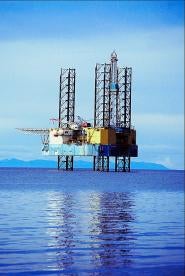This week, the Pennsylvania Department of Environmental Protection (PADEP) announced that it is one step closer to promulgating new regulations applicable to surface operations at oil and gas well sites. Yet one more step in the implementation of 2012’s Act 13, the current draft regulatory proposal focuses on enhancing consideration of impacts to public resources, secondary containment, spill prevention and management, waste management, and reclamation. Once the Attorney General’s Office completes its review of the proposed regulations this fall, a 60-day public comment period will open.
Public Resources
Under Act 13, PADEP is required to consider the impact of a proposed well on “public resources,” such as publicly owned parks, forests and wildlife areas, national or state scenic rivers, sensitive habitat or historical sites. Under the proposed regulations, applicants for well permits are required to notify the appropriate public resource agency in certain situations, such as if the well site is within:
Under this additional layer of coordination, the public resource agency may submit comments and recommendations to PADEP and the applicant. PADEP may then include in the well permit conditions to mitigate impacts on the relevant public resources.
Containment
Passed by the state legislature in 2012, Act 13 includes new containment requirements specific to unconventional wells. The proposed regulations set forth standards for temporary and long-term storage, secondary containment and freshwater impoundments. Some of the proposed changes include the following:
Spill Reporting, Response and Remediation
The proposed regulations include several new reporting, response and remediation requirements relevant to spills and releases at oil and gas well sites. Under the proposed regulations, an operator or responsible party must report the spill or release of 5 gallons or more of a regulated substance over a 24-hour period that is not completely contained by a containment system. For all releases, the operator would now be required to contact the appropriate regional Department office as soon as practicable, but no later than 2 hours after discovering the spill or release.
Once a spill or release has occurred, the operator or responsible party would be required to take “necessary corrective action” to prevent the substance from reaching state waters, prevent damage to property and prevent impacts to downstream users of state waters.
The proposed regulations also include specific direction for remediating spills and releases. For releases to the ground of less than 42 gallons that do not impact state waters, the operator may remediate the area by simply removing “visibly impacted” soil and disposing of it in accordance with state law. For spills greater than 42 gallons or that impact or threaten state waters, the operator must either demonstrate attainment of one or more of the state’s Act 2 standards or coordinate with PADEP regarding remediation of the release using the Act 2 background standard.
Waste Management
Waste management and disposal is also covered in the proposed regulations. Aside from the new containment requirements discussed above, there are several new waste management requirements, including:
Restoration and Reclamation
The proposed regulations touch on all aspects of the oil and gas development process, from the initial permitting to restoration and reclamation of the site after operations cease. If finalized, the proposed regulations would require that within nine months after completing drilling a well, owners and operators must restore the well site, remove or fill pits used to contain fluids or residual wastes and remove all drilling supplies, equipment and containment systems not needed for production. Operators are also required to restore borrow pits and access roads within nine months after completion of drilling all permitted wells on the well site or 30 days after the expiration of all existing well permits on the site, whichever occurs later in time.
A site is considered “restored” if the following conditions are met:
-
All permanent post construction stormwater control features are in place.
-
Remaining impervious areas are minimized.
-
All areas of the site not needed to safely operate the well are restored to approximate original conditions, including preconstruction contours, and can support the land uses that existed prior to oil and gas activities to the extent practicable.




 i
i


